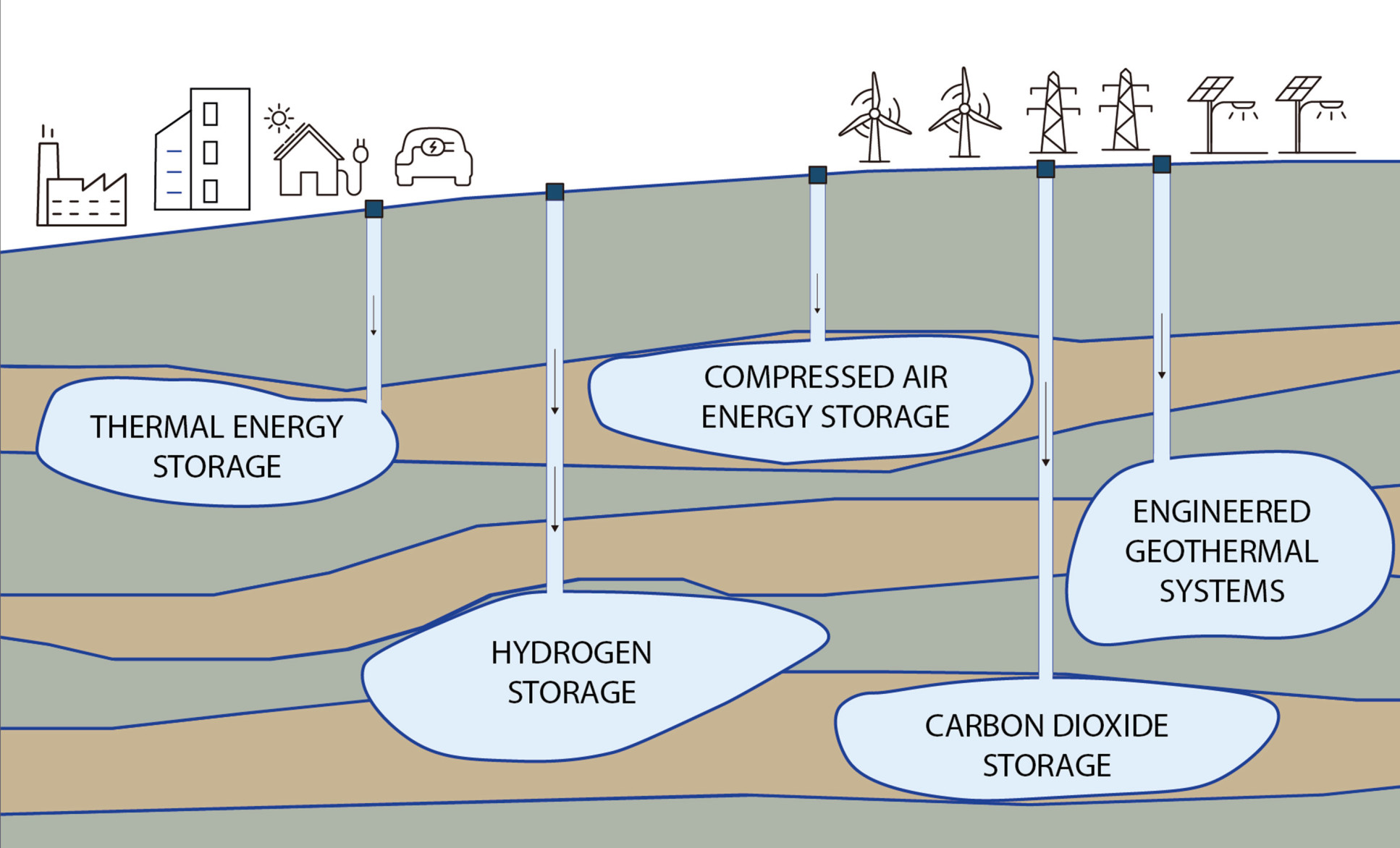
Green energy for homes and industry will be stored underground from one season to another, in the same way CO2 is stored

Imperial scientists have won a £3.6M NERC grant to research how to access greener energy sources safely.
 The project, called “SeisGreen” and funded by the Natural Environment Research Council (NERC), aims to better understand the possible risks associated with green energy technologies. These risks include induced seismicity, whereby small earthquakes occur as a result of injecting fluid into rocks - a technique used as part of various green energy processes.
The project, called “SeisGreen” and funded by the Natural Environment Research Council (NERC), aims to better understand the possible risks associated with green energy technologies. These risks include induced seismicity, whereby small earthquakes occur as a result of injecting fluid into rocks - a technique used as part of various green energy processes.
By quantifying this risk, and understanding how to minimise it, the researchers hope to unleash the full power of geothermal energy, carbon sequestration, and subsurface hydrogen storage, to help the UK move to greener energy sources.
Imperial College London will lead this project in collaboration with the Universities of Bristol, Edinburgh, Liverpool, and Manchester. The project will focus specifically on green energy technologies, and will not investigate any technologies aimed at the extraction of oil or shale gas.
Releasing renewable energy
Fluids, in the form of carbon dioxide (CO2) or water, are injected into the rocks beneath our feet for a variety of reasons: to capture and remove CO2 from the atmosphere, to produce geothermal energy to heat water, or to store hydrogen for future use. All of these activities are important parts of large-scale green energy solutions, and will help to reduce CO2 in the atmosphere.
However, injecting these fluids into the rocks can cause seismic activity, in the form of low-magnitude earthquakes, due to rock movements that release energy and create seismic waves. This new project will try to understand and mitigate the risk of this seismic activity using lab studies and modelling.
Without a safe way to inject fluids, the door to some of the UK’s most important green energy technologies would be shut.
Modelling a green energy future
“I am excited and eager to work with experts at other UK universities to find safe ways to inject fluids, and thereby contribute to a green energy future” Dr Adriana Paluszny Senior Lecturer
Seisgreen will be led at Imperial by Principal Investigator Dr Adriana Paluszny, and co-Investigator Professor Robert Zimmerman, both in the Department of Earth Science and Engineering. Dr Paluszny said: “I am excited and eager to work with experts at other UK universities in experimental rock mechanics, computer modelling, and seismic data analysis, to find safe ways to inject fluids, and thereby contribute to a green energy future”.
The research team aims to understand the mechanisms that control induced seismicity, what precise conditions cause it, what controls the magnitude, and how we can mitigate this risk.
Professor Nigel Brandon OBE FREng FRS, Dean of the Faculty of Engineering, Imperial College London, said: “With global energy demand increasing, the rising cost of conventional fossil fuels, and the urgent need for cleaner energy sources, we have an imperative to contribute to solutions that are sustainable at the large scale.”
Dr Paluszny added: “Over the next five years, our team will be studying and modelling the conditions that may create induced seismic activity, so that in the future we can safely inject fluids and find a pathway to sustainability for UK energy. We need this technology to be able to develop large-scale geological batteries to store renewable energy from summer to be used in winter, and to de-risk green subsurface energy sources, such as geothermal energy.”

A hydrogen future
The outcomes of this research could be key to the future of the hydrogen economy. In the long term, hydrogen could be an excellent renewable source of energy, as it can be produced using solar, wind, or natural gas energy. Yet hydrogen cannot be stored on the surface in large quantities, and so understanding how to safely store it underground without causing seismic events will be crucial to the success of hydrogen energy in the future, thereby helping to reduce our dependence on hydrocarbons.
This research will launch on 1 October 2022 and will be funded by NERC, which is part of UK Research and Innovation (UKRI). Dr Paluszny is a Royal Society Tata University Research Fellow.
Industrial collaborators include the British Geological Survey, Scottish Carbon Capture and Storage, Geothermal Engineering Ltd, Storegga (formerly Pale Blue Dot Energy), Massachusetts Institute of Technology, University of Bergen, University of Calgary, GFZ German Research Centre for Geosciences, the Carbon Capture and Storage wing of BP, GT Energy, and Applied Seismology Consulting Ltd.
Supporters

Article text (excluding photos or graphics) © Imperial College London.
Photos and graphics subject to third party copyright used with permission or © Imperial College London.
Reporters
Caroline Brogan
Communications Division

Contact details
Tel: +44 (0)20 7594 3415
Email: caroline.brogan@imperial.ac.uk
Show all stories by this author





Leave a comment
Your comment may be published, displaying your name as you provide it, unless you request otherwise. Your contact details will never be published.